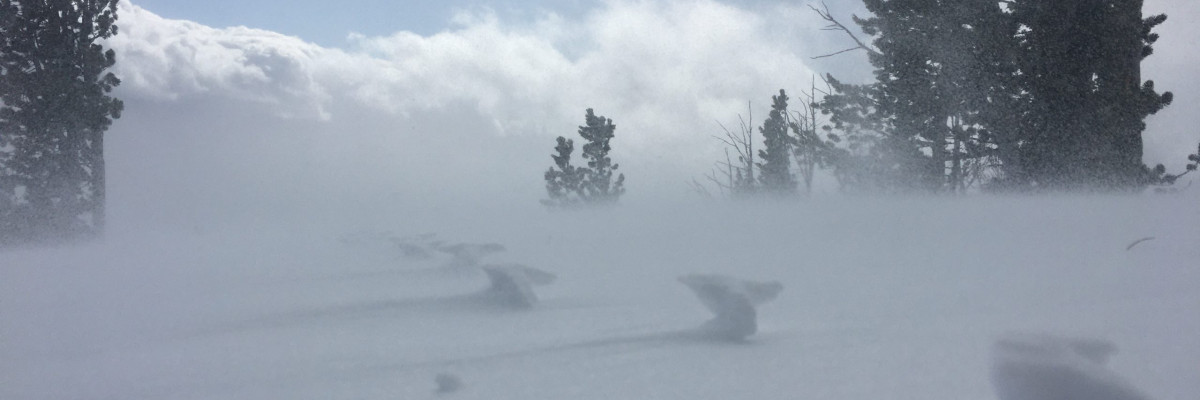Up to 6” of new snow with moderate winds will make avalanches possible on wind-loaded slopes. For today, the avalanche danger will be MODERATE on wind-loaded slopes and LOW elsewhere in West Central Montana.
Good morning, this is Andrew Schauer with the West Central Montana avalanche advisory for Thursday, March 12, 2020. Today’s advisory is sponsored by ZillaState. This advisory does not apply to operating ski areas, expires at midnight tonight, and is the sole responsibility of the U.S. Forest Service.
Weather and Snowpack
In the past 24 hours, a small system dropped 6” of snow in the southern Missions, 4” in the Rattlesnake, and a trace in the rest of the advisory area. Winds have been 10-20 mph out of the west with gusts up to 48 mph. As of 5 AM, mountain temperatures are in the high teens to low 20’s. Today, winds will blow 10-15 mph out of the west with gusts to 25, and mountain temperatures will be in the low 20’s to upper 30’s. Clouds will move in this afternoon as a low pressure system brings cold temperatures tonight through the weekend.
Up to 6” of new snow last night with moderate to strong winds will make it possible for a human to trigger wind slabs up to a foot deep today. These avalanches will be most likely near Seeley Lake, which received the most snow in the past 24 hours. Yesterday, Todd and I toured in the Bitterroot and found stable conditions, but strong winds were already transporting snow. Jeff recorded a similar observation in the Rattlesnake. With low snow totals last night, wind slabs will be smaller and less likely in these areas today. However, even small avalanches can present a dangerous hazard in consequential terrain. Look for freshly drifted snow and avoid wind-loaded slopes, especially above terrain traps like cliffs, trees, or gullies.
It will also be important to keep an eye on solar aspects, especially at lower elevations. Loose wet avalanches (photo) will be possible as temperatures rise throughout the day. Pay attention to changing snow conditions. If you notice you are punching through heavy, wet snow, it is time to move to shaded slopes or head home for the day.
The Bottom Line
New snow and moderate winds have built reactive wind slabs on leeward slopes. For today it will be important to identify and avoid wind loaded slopes. As the snow heats up during the day, be aware of the increasing likelihood of loose wet avalanches, especially if you notice pinwheels, rollerballs, or if you are sinking up past your boots in heavy, wet snow.
Your observations are extremely helpful! If you get out, please take a minute to fill out the observation form on our website (missoulaavalanche.org), or shoot us a quick email at [email protected].
We still have several avalanche courses remaining this season. If you are interested in enrolling, you can find info at the course offerings page on our website or email us with questions.














